Chile’s Carabineros: Ready for every call
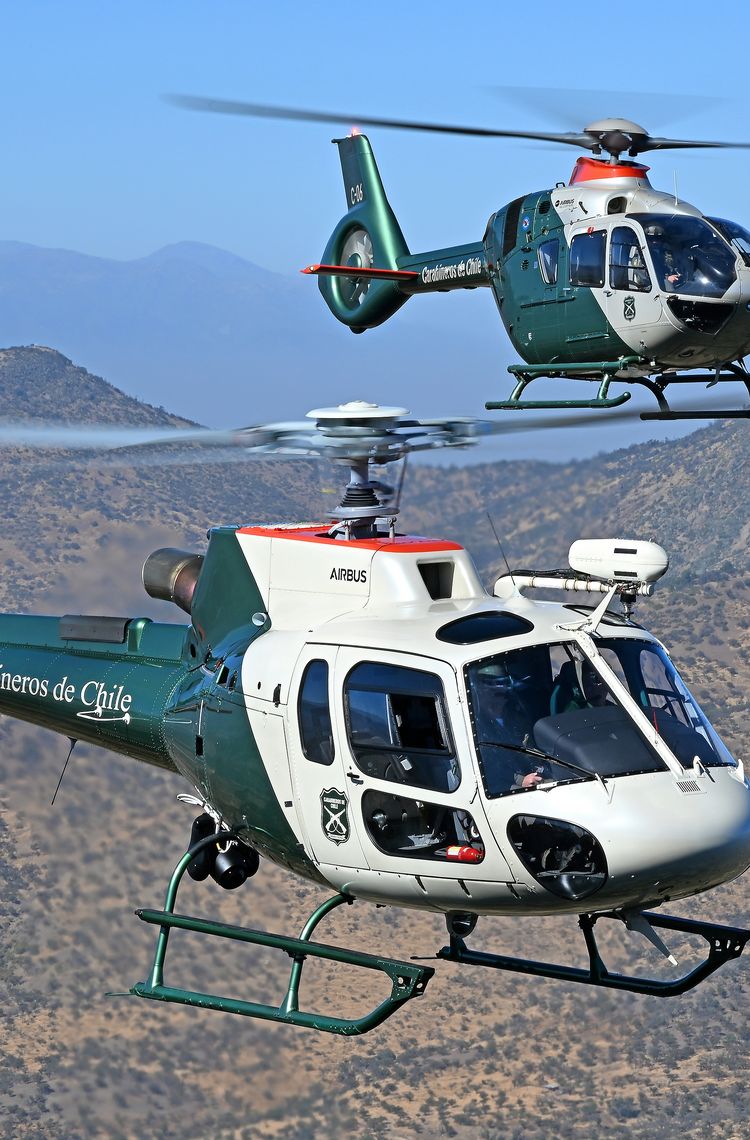
If there is one thing that characterises the helicopters of the Carabineros Air Prefecture, it is their versatility. From mountain rescues and medical evacuations to police pursuits and operations with Chile’s special forces, the Carabineros' H135 helicopters consistently make a difference. Now, with the addition of the H125 to the family, the capabilities of the fleet to lend itself to a wide array of missions are even greater.
It is still early in the morning, but the sun is already shining brightly at the Carabineros Air Prefecture in Tobalaba. On the runway are the two H135s that have been in service since 2000, while in the shade of the hanger, sits the brand-new H125. Suddenly an alarm sounds and the entire crew rushes from the barracks to the runway. Lieutenant Colonel Carlos Molina watches them without taking his eyes off his watch: "Two minutes and forty seconds - not bad," he says as the helicopter takes off from the base.
This is not a drill: it is a real alert to go and rescue an injured person in the mountains, something that happens often at the Tobalaba base. The Carabineros teams can be in the air in an impressive three minutes, to go to any operation or rescue, wherever they are needed.
Génesis Vera, Lieutenant and H135 pilot, explains why they chose this helicopter for this particular mission: "We use the H135 to carry out mountain rescue missions, air medical transfers and evacuations, and for the transport of organs. We also employ it for police operations and to support ground personnel in pursuing and detaining vehicles. Its low sound levels and compact size allows us to perform hospital transfers and land anywhere.”
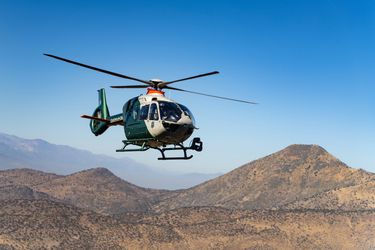
Versatility and availability
“The H135 is already part of our prefecture's know-how,”’ explains Carlos Molina, who is also an H135 and H125 pilot. ”Beyond being a tool, the H135 has been a crucial instrument that has enabled us to save countless lives and by arriving promptly wherever we are needed.”
What is striking about the Carabineros base is that it is not only its aircraft that are versatile t, but also its personnel, who work and train to be as flexible as possible in order to be as effective as possible. For this reason, several of the senior commanders are also pilots, combining the two functions.
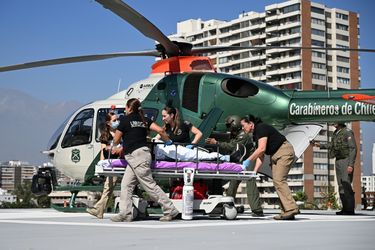
Side by side with the special forces
After the success of the emergency intervention with H135 this morning, the prefecture's team now has to train with some very special partners: the GOPE (Grupo de Operaciones Policiales Especiales), Chile's Special Police Operations Group. “We often work with the GOPE in high mountain operations, pursuits, insertion or extraction in hostile areas, narcotics searches... any operation that requires rapid intervention to help the community," says the Lieutenant Colonel.
The Carabineros use fast roping in these cases so that the GOPE can quickly descend from the aircraft while their colleagues provide cover from the air. The new H125 has now been added to this training operation, from which the armed commandos can secure the area where the police procedure is being carried out.
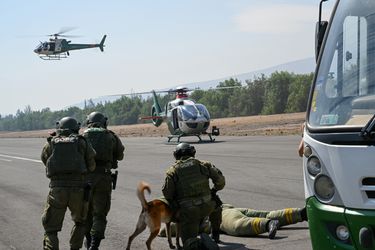
Increasing capabilities with the H125
Since April 2024, the Carabineros have had a new member, an H125 equipped with a searchlight and rescue crane. This brings to four the number of security forces in the country operating the H125, which is particularly suited to the high altitude and hot conditions that prevail in the mountains of the Andes.
“We are all very happy to have this new machine available to the community. We are well aware of the H125‘s capabilities, and we know that it will allow us to improve our response times, increase our operational capacity in high-altitude flights and for training purposes,” explains Lieutenant Colonel Carlos Molina. “We carry out procedures in the Cordillera at more than 15,000 feet, and the H125 will be very useful in this regard.”
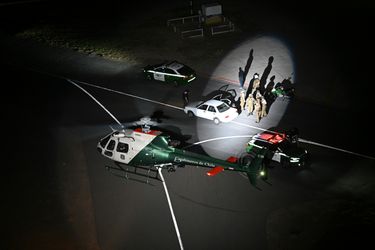
“The public sees the helicopter as an essential tool, whether it is used for police work, natural disasters or emergency situations,” says Colonel Javier Álvarez Cortés, Prefect of the Carabineros Air Prefecture. “The integration of the H125 is further proof of the Carabineros de Chile's commitment to the security of our citizens.”
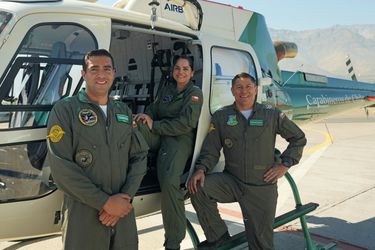
Latest Helicopters news
Continue Reading

The Airbus H145: Flexibility for a world in flux
Web Story
Helicopters
Facing diverse global challenges, the H145 is evolving to meet a variety of needs. Head of Programme Daniela Dudek explains what's next for the helicopter.
Airbus NH90 for the Spanish Forces
Web Story
Helicopters

Airbus launches H160M flight test campaign
Press Release
Helicopters
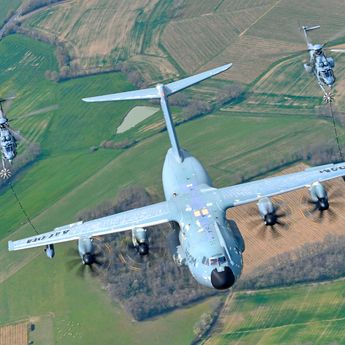
Airbus A400M/H225M: A winning duo
Web Story
Helicopters

Nothing can compare to a helicopter's capacity to make lifesaving interventions
Web Story
Helicopters